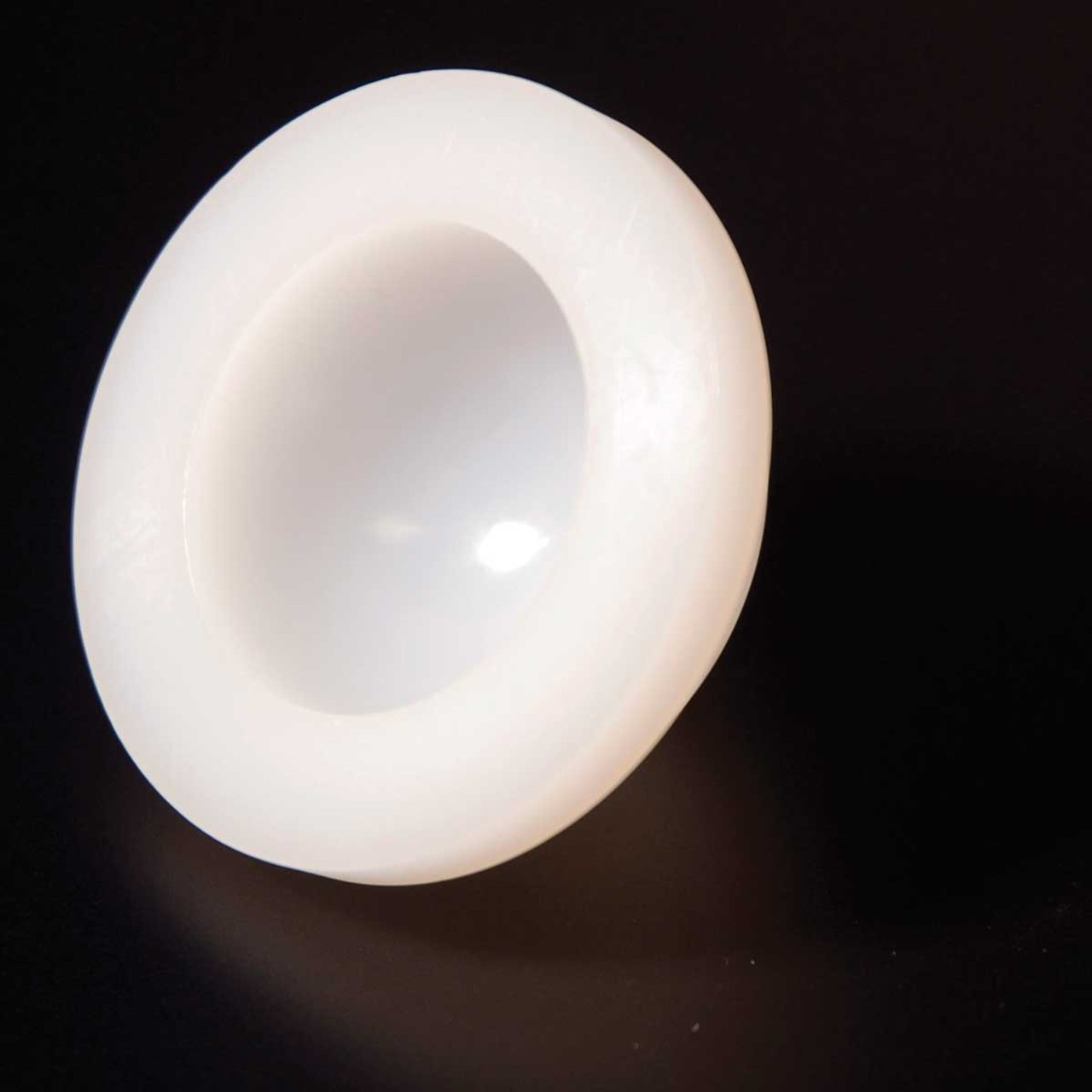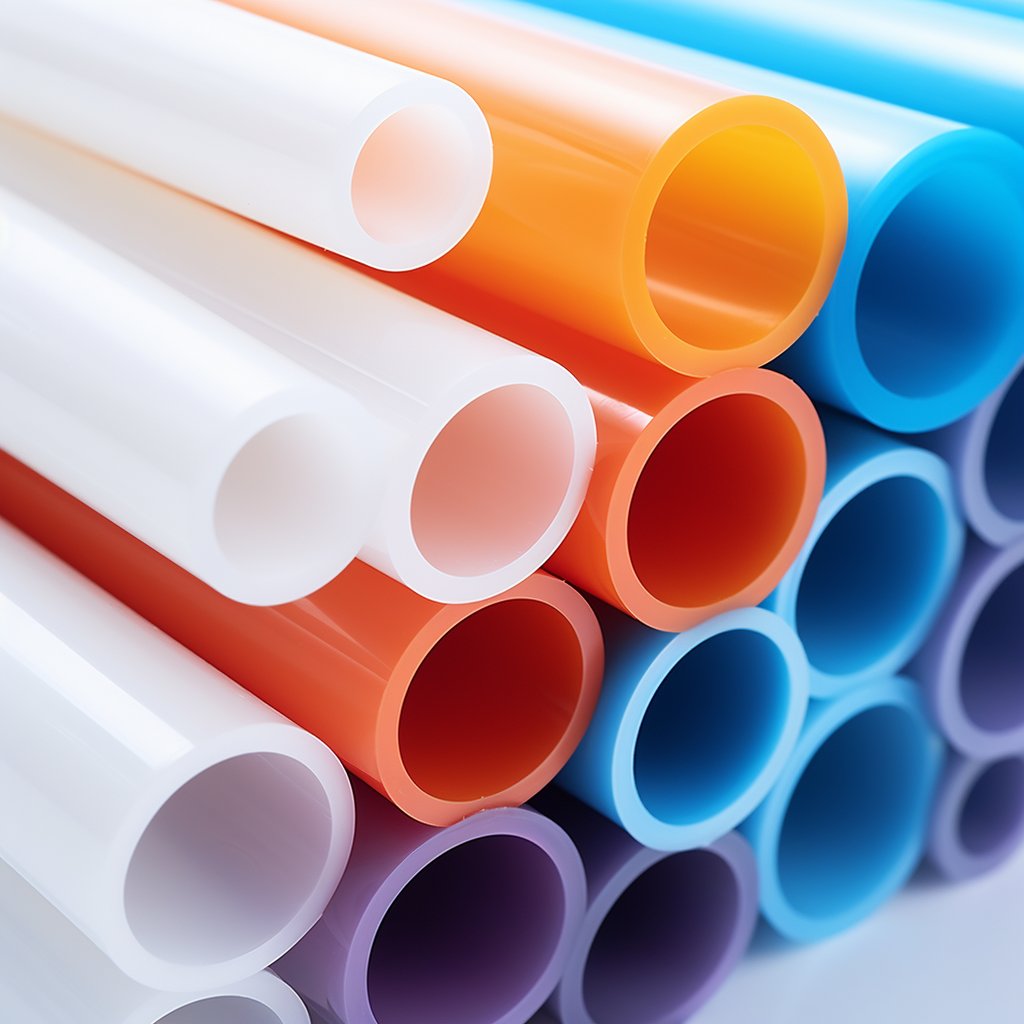Ultra-high molecular Weight Polyethylene (UHMW) and High-Density Polyethylene are reliable thermoplastic polymers of ethylene monomers. Typically, polymerizing hydrogen and ethylene gasses in the presence of a Ziegler-Natta catalyst produces HDPE, while utilizing a Metallocene catalyst produces UHMW.
Despite their similar resemblance, these materials differ both in composition and applications. This post focuses on the key differences and applications of UHMW vs. HDPE.
What is UHMW?
UHMWPE is a sturdy yet affordable abrasion-resistant material suitable for various wear applications. Besides its low coefficient of friction, this semi-crystalline standard plastic also provides high impact and corrosion resistance.
Due to its uniquely elongated polymer chains that run laterally, it boasts a high molecular weight, about 5-9M AMU.
Succeeding polymer chains bind to each other due to the Van der Waals forces. This force upturns the energy required to disseminate the chains, making UHMW more durable than contemporary thermoplastics.
Additionally, UHMW is odorless, non-toxic, and non-adhesive. These properties make it suitable for manufacturing gears, rollers, screws, sliding plates, and star wheels.
Similarly, its non-stick and self-lubricating properties make UHMW suitable for high-wear applications, including conveyor systems, marine dock fenders, and truck bed linings.

What Is HDPE?
Polyethylene high-density, known as alkaline when utilized in HDPE pipes, consists of lightly packed polymer chains.
Despite featuring low polymer chain branching, HDPE is relatively rigid and provides modest impact resistance. Consequently, it can safely be handled in temperatures as high as 120°C, rendering it autoclavable.
This material is slightly opaque and has low liquid permeability. It also boasts a significant strength-to-density ratio and good chemical resistance.
HDPE allows injection molding and blow molding, and it can be further shaped using vacuum forming, plastic welding, and thermoforming techniques.
Due to its low moisture permeability, this thermoplastic is suitable for manufacturing giant water and chemical storage tanks, plastic bags, cutting boards, and trays.
It's also famous for playground equipment, geomembranes, and impervious piping systems. Although easier to weld, machine, and recycle, HDPE is less durable and offers lower abrasion resistance than UHMW polyethylene.

Key Differences between UHMW and HDPE
While indistinguishable in build, UHMW vs HDPE differ in strength, versatility, and cost-effectiveness. Here are some key differences to help you make informed decisions about these thermoplastics.
Molecular Structure
A huge dissimilarity between HDPE and UHMW manifests significantly in their molecular weight. While UHMW features longer polymer chains for maximum durability and strength, HDPE's shorter chains allow for easy processing, making it attractive for lower-cost applications.
Physical Properties Comparison
Table comparing fundamental properties:
Property | UHMW | HDPE |
Molecular Weight | Very high | High |
Density | 0.93 - 0.95 g/cm³ | 0.93 - 0.97 g/cm³ |
Impact Strength | Highest among thermoplastics | Good |
Abrasion Resistance | Superior | Moderate |
Chemical Resistance | Good | Excellent with some chemicals |
Coefficient of Friction | ~0.14 | ~0.20 |
Toughness and Durability
Comparatively, UHMW is more durable, providing more excellent abrasion resistance than HDPE. In addition to extraordinarily long polymer chains, UHMW molecules pack tightly, thus wearing down less.
In high-wear applications such as conveyor belts, UHMW far outmatches HDPE, lasting up to ten times longer. On the other hand, HDPE is more adept at welding and machines.
Impact Strength
UHMW provides the highest impact resistance of all thermoplastics available. It can withstand 100 times more impact than HDPE without rupturing or tearing. With its long chains and dense microstructure, Ultra-high molecular weight polyethylene boasts consummate energy absorption.
This tactile strength makes UHMW idyllic for high-impact applications to minimize damaging effects resulting from falls and drops. In contrast, HDPE will likely fracture in such circumstances.
Chemical Resistance
While UHMW offers decent chemical resistance, HDPE's resistance will vary depending on the chemical, ranging from good to excellent reliability. Typically, unlike UHMW polyethylene, HDPE vaunts superior resistance to harsh chemicals, including solid detergents. Yet, we recommend that you carry out material testing for compatibility.
Cost
Possibly due to its reliability, UHMW costs up to five times more than HDPE. Additionally, manufacturing UHMW follows a specialized process and requires high-purity resins, resulting in a hefty price tag.
Accordingly, we recommend substituting it for HDPE, particularly in applications that don't require UHMW's durability. This way, you can strike a performance balance at lower costs.
Recyclability
UHMW and HDPE polyethylene are recyclable and, hence, eco-friendly. However, HDPE is more sustainable since it can be melted for remodeling without deteriorating the plastic's quality.
On the other hand, you can only remember UHMW as many times before losing its much-desired properties. Thus, consider adding raw UHMW to your mold to enhance its recyclability.
Key Advantages of UHMW
High Strength and Durability
Regarded for its imposing strength-to-density ratio, UHMW ranks among the most robust and most durable thermoplastics.
This attribute makes it ideal for high-wear and high-impact applications. It also outlasts other materials, including HDPE, lumber, and metal.
Exceptional Wear Resistance
UHMW provides excellent resistance to abrasion, making it perfect for contact applications that require materials to glide smoothly.
With a -0.14 coefficient of friction, the material is suitable for bearings, gears, pulleys, truck beds, and conveyor systems.
Excellent Chemical Resistance
With its renowned chemical-resistant properties, UHMW is ideal for storing corrosive chemicals, including acids and bases.
Low Water Absorption
Most materials are porous and thus swell and degrade when exposed to moisture. Fortunately, UHMW's low moisture absorption attribute maintains its dimensional stability and overall structural integrity with time.
UV Resistance
UHMW doesn't tarnish or become brittle due to exposure to UV rays. This property allows you to deploy this material in outdoor applications without worrying about the sun's effects on its longevity.
Food Safe and FDA Approved
Since UHMW is tasteless and non-toxic, using it for food containers doesn't pose a health hazard. Moreover, it is odorless and features non-reactive properties that would otherwise contaminate food.
Key Advantages of HDPE
Fair Impact Resistance
HDPE's high molecular weight and structure allow it to withstand some impact without breaking or cracking.
Chemical Resistance
Besides remaining unreactive to most acids and bases, HDPE is chemical-resistant, making it suitable for processing and storing chemicals and solvents.
UV Resistance
HDPE can withstand extended exposure to the sun's harmful ultraviolet rays without fading or degrading.
Good Wear Resistance
With a low coefficient of friction of -0.20, HDPE can reduce wear and tear on contact surfaces. However, it delivers a dismal performance compared to UHMW.
Environmental Impact
Like UHMW, HDPE is eco-friendly, allowing you to recycle them into new products.
Drawbacks and Limitations
Despite their numerous advantages, HDPE and UHMW come with a fair share of limitations, including;
lMoisture Absorption: While UHMW allows some moisture permeability, HDPE is moisture-resistant, affecting its mechanical abilities.
lLack of self-lubricating: Unlike UHMW polyethylene, HDPE isn't slick and thus doesn't self-lubricate. Therefore, for a smooth slide, you need additional lubricants.
lImpact and Wear resistance: UHMW provides more excellent impact resistance than HDPE.
lProduction Cost: UHMW requires more input, while HDPE costs less. However, UHMW is more arduous to mold or machine.
lLimited Temperature Resistance: Both materials fail to withstand intense heat, making them unsuitable for aerospace industries.
HDPE vs. UHMW: Applications and Uses
With their remarkable mechanical properties, HDPE and UHMW are handy for various applications, including agriculture, construction, automotive, and mining. More usages include;
lConveyor Systems are ideal for food processing and packaging conveyor belt systems.
lOutdoor Equipment: HDPE and UHMW are suitable for constructing outdoor playground equipment, as they are highly resistant to UV damage.
lPile Wraps: In coastal and marine environments, these thermoplastics serve as pile guards, guarding piers and dock pilings, among other marine structures, from abrasion.
lPipe Fittings: They are used to produce pipe fittings, including valves, flanges, and connectors
lMedical Devices: HDPE and UHMW are vital for producing prosthetics and orthotics.
The UHMW exclusive applications
Here are some UHMW-exclusive applications
lFood and beverage processing and storage gear
lKitchen cabinets, counters, and tables
lMarine gear
lMarine dock parts
lElectrical components
lScrews
lOutrigger Parts
lAssembly production lines
lWear strips, bearings, star wheels, guide rails,
lIdler sprockets
lRollers and sliding plates
lComponents of conveyor lines.
lBody armor
The HDPE-exclusive applications
lUnique HDPE applications include;
lPlastic wood
lTrash cans and recycle bins
lInterior vehicle components
lPorch and patio furniture
lShopping bags
lPipe fittings
lBumpers, anti-skid surfaces.
Conclusion
Despite the availability of alternative plastics such as LDPE, ABS, and MDPE, HDPE and UHMW polyethylene continue to enjoy significant market share. These polymers offer various attributes besides their advantages, including chemical and abrasion resistance, tensile strength, and UV resistance.



